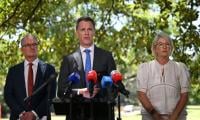Provision of urban housing for the poor is a complex phenomenon. Most of the urban poor live in informal slums and face the day-to-day difficulties of navigating their relationship with the state.
Yet, if the urban poor are given even the most rudimentary of prospects of title of their land, it improves their bargaining position vis-a-vis the land allotment agency. This is explored in some detail in a book chapter by Jan Van Der Linden in ‘Urban Pakistan’ edited by Khalid W Bajwa, 2013. We are referring to this publication in our article today.
In this publication, the housing problem for the poor is considered one of “scarcity” – where the governments are unwilling to make land and infrastructure available for the poor and so they (the poor) access it via extra-legal ways through informal networks.
These informal networks are managed by patrons who lobby with the government for land, infrastructure and services on less than secure property rights enclaves. These patrons have some clout in securing the provision of services and goods for the poor. Patrons also try to convince those at the helm of affairs in the relevant government agencies not to take action against illegal settlements for the poor and to provide them utilities.
Illegal housing has been commercialized in recent decades, so that the urban poor have no option but to turn to these patrons who are developers of illegal settlements and brokers of land and services. The government apparatus that is marred by irregularities and “bureaucratic involution” supports these patrons and that is how they deliver land and infrastructure to the urban poor. It would not work, had they not the support of the government functionaries. They manipulate the rule and procedures and processes to allow the illegal occupation of public land and these archaic bureaucratic procedures work well to promote the culture of patronage.
Linden has an interesting comment on the paradoxical relationship between patrons and clients, “By definition, patronage stands in the way of a solution to problems. This is so, in the first place, because the interests of patrons often do not coincide with those of the clients (in this case, the urban poor) whose interests they are supposedly serving. Second, patrons strive for particular ad hoc solutions to parts of problems only and they cannot afford to solve problems in the long term or in a structural way since, by doing so, they would undermine their own usefulness: the problems are the basis of their income and/or their power position”.
The urban poor are too well-aware of the transactional nature of their relationship with their patrons and are often not satisfied with their work. Yet, they are dependent on their patrons for the provision of services and goods – so they channel their demands through them. Patronage takes place in an environment where poor provision of information and opaqueness is prevalent.
The nature of ‘scarcity’ of urban housing and the existence or lack of alternatives available to clients determine the very nature of the patron-client relationship in urban housing for the poor. The author of the publication has done a case study of an alternative housing scheme, ‘Khuda Ki Basti’, for the poor in Hyderabad and it offers some interesting insights on how the patron-client relationship in the establishment of slums can be transformed by a more participatory relationship with the prospects of more stable availability of title of land for the poor.
After the failure of an earlier housing scheme for the poor, the Hyderabad Development Authority (HDA) came up with ‘Khuda Ki Basti’ with the help of known alternative visionaries of urban planning for the poor. The purpose was to settle the poor on land where the whole household gathers. They are not given allotment letters to begin with, unlike previous housing schemes. Rather for a down payment, they gradually pay for land and infrastructure and prioritize its provision according to their needs. If they leave the plot, it risks cancelling their rights. Once the full payment has been received for the land and infrastructure on installments; then they are given the allotment letters.
This alternative scheme was managed through popular participation of the urban poor where their voice and views were sought regarding the development. They elected their ‘leaders’, who often became a new form of patrons. This became a problem, and the residents of the new settlement were often of the view that they felt confident dealing with the HDA public officials themselves and did not need intermediaries in the form of ‘leaders’. The confidence of people to be able to navigate their own way is due to recognition of their right to land (despite the fact that they don’t get full titles till they have paid) officially by the HDA to begin with when they occupy the land. This is completely missing in the case of other illegal slums settlements that makes the urban poor reliant on often unreliable patrons.
There are lessons to be learnt in this model. When the government partners with experts on urban housing with a focus on the urban poor and uses the participatory approaches that avoid the pitfalls of failed government models and experiments, it can produce good results. It depends on careful understanding of how the market for housing for the urban poor works and their needs, vulnerabilities, and strengths.
The PTI government has urban housing on its agenda. The government does not seem to have much financial cushion to work on it right now. However, when the government seriously works to deliver on its manifesto, it better study successful schemes like ‘Khuda Ki Basti’ to promote an alternative vision for housing of the urban poor.
The writer is an Islamabad-based social scientist.
Email: fskcolumns@gmail.com















